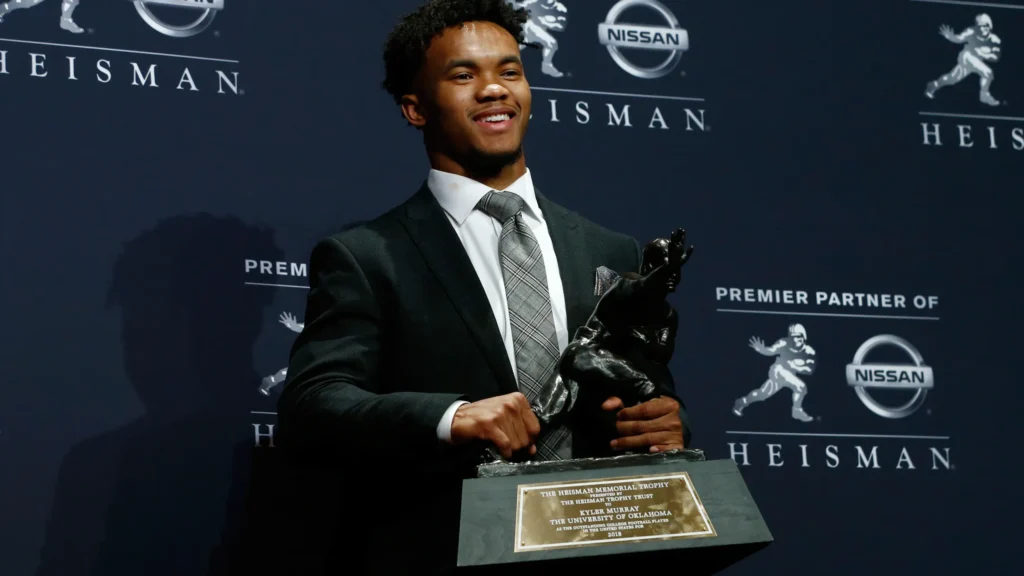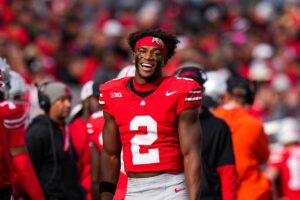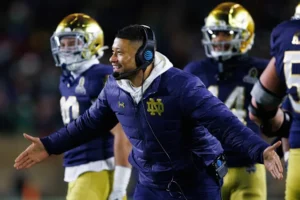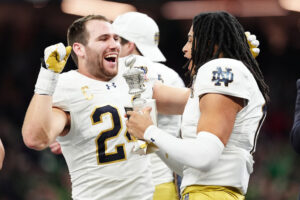
Six years ago, the Arizona Cardinals made one of the most talked-about and bold decisions in modern NFL Draft history: they selected Oklahoma quarterback Kyler Murray with the first overall pick in the 2019 NFL Draft. Murray, fresh off a spectacular Heisman Trophy-winning season, was a rare talent—undersized by traditional quarterback standards but overflowing with athleticism, arm talent, and poise. Fast forward to today, and Murray’s journey has been nothing short of a roller coaster—filled with flashes of brilliance, frustrating injuries, franchise turbulence, and questions about what comes next.
The Decision to Draft Kyler Murray
To truly understand Murray’s trajectory, we have to rewind to the context of his arrival. The Cardinals had just wrapped up a disastrous 3–13 season in 2018, leading to the firing of head coach Steve Wilks after only one year. That same season, the team had selected quarterback Josh Rosen with the 10th overall pick. Conventional wisdom suggested Rosen deserved more time, but the Cardinals pivoted aggressively. They brought in Kliff Kingsbury, a college coach with an affinity for high-octane offenses and Air Raid principles. Kingsbury had previously raved about Murray while still at Texas Tech, saying he’d take him first overall if he had the chance. That chance came, and the Cardinals took it.
The decision to draft Murray signaled a new era, not just for Arizona but for the NFL at large. A 5’10” quarterback who had also been a first-round MLB pick, Murray was the embodiment of the modern dual-threat quarterback—part Lamar Jackson, part Russell Wilson, with a little Patrick Mahomes flair. He became the first player ever to be selected in the first round of both the MLB and NFL Drafts. The Cardinals traded Rosen to the Dolphins, handed Murray the keys to the franchise, and never looked back.
Rookie Season: Signs of Stardom
In 2019, Murray immediately showcased why Arizona placed their faith in him. He threw for 3,722 yards and 20 touchdowns while adding another 544 yards and 4 scores on the ground. He won the NFL Offensive Rookie of the Year award, helping the Cardinals improve to 5–10–1—a modest step forward, but one that carried hope. Even more important than the wins was Murray’s undeniable talent. His escapability, quick release, and calm demeanor in chaos made him must-watch television.
What stood out most, even then, was Murray’s ability to extend plays and make throws on the run. He had the kind of playmaking ability you couldn’t teach. His chemistry with veteran wide receiver Larry Fitzgerald, and later with Christian Kirk, provided a solid foundation. Though still raw in many areas, Murray gave Cardinals fans something they hadn’t had in a long time: a franchise quarterback with superstar potential.
Year Two: Ascending Into the Spotlight
In 2020, Murray made his first real leap. He threw for nearly 4,000 yards again, added 26 passing touchdowns, and rushed for 819 yards and 11 scores. The Cardinals finished 8–8, just missing the playoffs, but Murray’s progress was evident. His dual-threat ability was unlocking new dimensions of Kingsbury’s offense.
The highlight of the year was arguably the most iconic play of his career: the “Hail Murray.” In a Week 10 thriller against the Buffalo Bills, Murray scrambled to his left and launched a 50-yard bomb to DeAndre Hopkins—who had been acquired in a blockbuster trade that offseason—surrounded by three defenders. Hopkins came down with the catch in one of the most memorable plays of the decade. It was the kind of moment that reinforced the belief that Murray wasn’t just a good quarterback—he could be great.
2021: The Breakout and the Breakdown
Everything seemed to be aligning in 2021. The Cardinals started 7–0, Murray was firmly in the MVP conversation, and the team’s offense looked like one of the most dangerous in the league. He was more efficient, more in command of the system, and more comfortable in the pocket.
But as with many promising arcs, adversity struck. Murray missed three games due to an ankle injury, and Arizona stumbled down the stretch, losing four of their last five. They limped into the playoffs at 11–6 and were promptly demolished by the Los Angeles Rams in the Wild Card round. Murray’s performance in that game—137 passing yards, 2 interceptions, and a pick-six—raised questions about his readiness for the big stage. Still, it was only his third season. The upside was still very much alive.
2022: Drama and Doubt
The 2022 offseason was turbulent. First came Murray’s contract situation. He scrubbed all Cardinals-related content from his social media accounts, sparking speculation about his long-term commitment. Eventually, Arizona gave him a five-year, $230.5 million extension with $160 million guaranteed.
But the contract came with controversy. A bizarre clause requiring Murray to complete four hours of “independent study” per week went public, raising concerns about his work ethic. The clause was eventually removed, but the damage to his reputation lingered. Murray himself dismissed the criticism, asserting that he had always prepared like a professional. Nevertheless, the public perception had shifted.
On the field, the 2022 season was a mess. The Cardinals finished 4–13, Kingsbury was fired, GM Steve Keim stepped down, and Murray tore his ACL in Week 14. His season ended with 2,368 passing yards, 14 touchdowns, 7 interceptions—and more questions than answers.
2023: Recovery and Rebuild
After undergoing surgery in January 2023, Murray missed the first nine games of the 2023 season. When he returned in Week 10, it was under a new head coach—Jonathan Gannon—and a new offensive coordinator. The roster had been stripped down in a rebuild, and expectations were modest at best.
Still, Murray showed signs of growth, especially late in the season. He appeared more mature, more deliberate with his reads, and more in tune with the offense. Though he only played in eight games, he threw for 1,799 yards and 10 touchdowns with 4 interceptions, adding 244 rushing yards and 3 scores. Arizona finished 4–13 again, but the silver lining was Murray’s gradual return to form.
Year Six and Beyond: The Crucial Crossroads
Now, in 2025, Kyler Murray is entering the most critical chapter of his NFL journey. The Cardinals have retooled around him, with promising young talent and a top-tier draft class to bolster the roster. Questions still swirl about whether Murray can return to his pre-injury ceiling—and whether he can lead Arizona deep into the postseason.
His critics point to the inconsistency, the injuries, and the postseason no-show in 2021. His defenders cite his natural ability, the dysfunction he’s endured, and the flashes of elite play. Both sides have valid points.
What’s clear is that Murray has matured. Gone are the headlines about study habits and sideline body language. In their place is a quarterback who, by all accounts, is growing into the leadership role that a franchise quarterback must embrace. He’s no longer the undersized kid trying to prove he belongs—he does belong. Now he must prove he can win.
Kyler Murray’s Legacy So Far
In six years, Murray has become one of the most fascinating figures in the NFL. His statistics stack up well against many peers:
- Over 16,000 passing yards
- More than 100 passing touchdowns
- Over 3,000 rushing yards
- Three Pro Bowl selections
- NFL Offensive Rookie of the Year
But his legacy is still being written. If Murray leads the Cardinals to sustained success over the next few seasons, his early struggles and the 2022 drama will fade into the background. He’ll be remembered as the franchise savior who helped usher in a new era.
If not—if the injuries linger or the team stagnates—he could join the long list of talented quarterbacks who couldn’t quite turn potential into lasting greatness.
Six years ago, drafting Kyler Murray was a franchise-altering move—risky, polarizing, and full of promise. Today, he remains the face of the Arizona Cardinals, a gifted quarterback standing at a career crossroads. What happens next will define not only his legacy, but the trajectory of a franchise that bet everything on a 5’10” phenom from Oklahoma.





